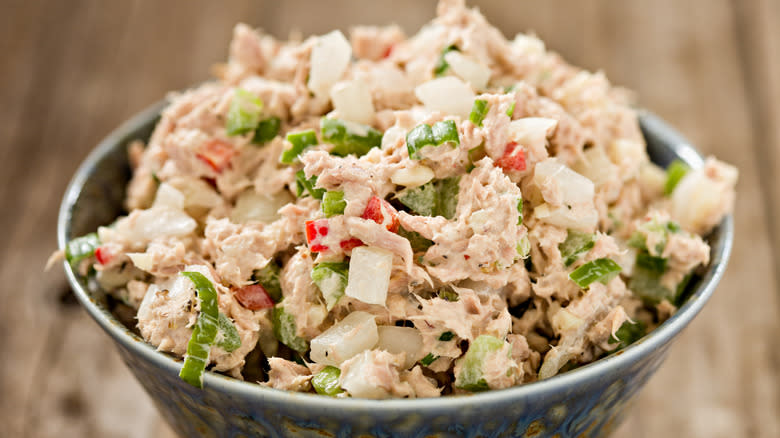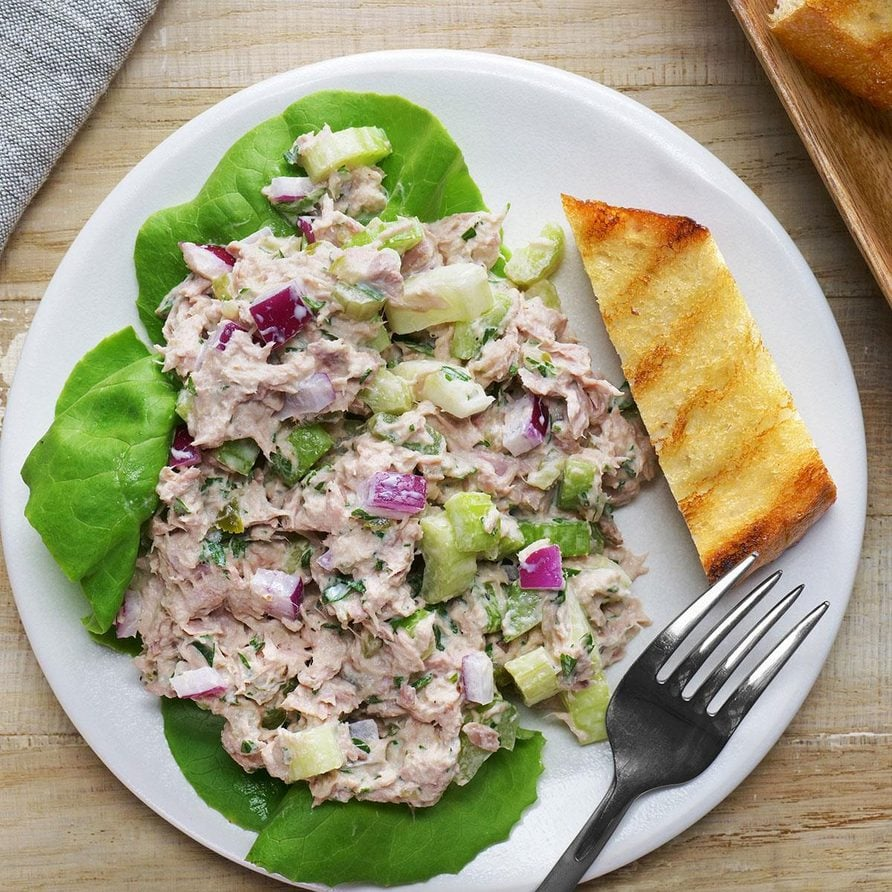We’ve all been there. You open the fridge, spot the tuna salad from earlier in the week, and ask yourself, “Can I still eat this?” Maybe your sister swears it’s fine for seven days. Maybe you’re more of a cautious three-day person. Either way, it’s time to break down the facts, toss out the myths, and figure out once and for all — how long is tuna salad actually safe to eat?
Let’s get into it.
What’s Really in Your Tuna Salad? It Matters More Than You Think
Tuna salad isn’t just tuna. It’s a mix of ingredients with their own expiration clocks. You’ve got:
- Canned tuna, which is shelf-stable until opened, but once it’s exposed to air — the countdown begins.
- Mayonnaise, a creamy blend of eggs and oil, which doesn’t play nice when temps rise.
- Chopped celery, onions, pickles, spices — all fresh, all quick to spoil once cut up.
This combo makes tuna salad a perishable powerhouse. It may taste great, but it’s also a breeding ground for bacteria if not handled right.
Video: How Long Is Tuna Salad Really Safe? Food Safety Guide
The Cold, Hard Science Behind Spoilage
Let’s talk bacteria. These little party crashers multiply fast — especially between 40°F and 140°F (a range scientists call the “danger zone”). That means leaving your tuna salad out on the counter for just a couple of hours can turn it into a bacterial buffet.
Refrigeration slows the growth, but it doesn’t hit pause. Even when chilled, bacteria keep doing their thing — just more slowly. That’s why time and temperature both matter when it comes to storing tuna salad safely.
Your Tuna Salad Storage Game Plan
If you want that tuna salad to last — and still be safe — you’ve got to store it right.
Here’s what the pros say:
- Use an airtight container to lock out moisture and bacteria.
- Keep it below 40°F — the colder your fridge, the better.
- Don’t leave it out on the counter more than 2 hours. Ever.
- Scoop what you’ll eat, not the whole bowl — repeated temperature shifts speed up spoilage.
And the golden rule? Eat it within 3 to 5 days. That’s your best bet for both safety and flavor.
But How Do You Know When It’s Gone Bad?

Not all food tells you it’s spoiled with fireworks. Sometimes the warning signs are subtle. But with tuna salad, there are clues you can’t miss:
- A sour or funky smell? Toss it.
- Weird texture? If it’s slimy or mushy, it’s not your friend anymore.
- Color change? If it’s looking gray or off-color, it’s done.
Trust your senses. If anything seems “off,” don’t chance it. One bite isn’t worth a weekend spent hugging the toilet.
What Happens If You Ignore the Signs? Spoiler Alert: It’s Not Pretty
Eating bad tuna salad isn’t just unpleasant — it can make you sick. Like, really sick. We’re talking:
- Nausea
- Vomiting
- Diarrhea
- Fever
- Cramps
Food poisoning hits fast and hard. And for kids, older adults, or anyone with a weakened immune system, it can be dangerous. So yeah, erring on the side of caution is always a smarter move.
What the Experts Say (So You Don’t Have to Guess)

Food safety specialists are clear: 3 to 5 days in the fridge is the maximum safe window for tuna salad. That assumes:
- It was made with fresh ingredients
- It was refrigerated promptly
- It stayed below 40°F the whole time
If your salad sat out for a picnic or was forgotten overnight on the counter? It’s a no-go, even if it’s within that window. Temperature abuse = unsafe food.
My Sister Says It’s Fine for a Week — Who’s Right?
We’ve all got a friend or family member who swears they’ve “never gotten sick” from week-old tuna salad. But that doesn’t make it safe — just lucky.
Food poisoning doesn’t hit every time, but when it does? It’s brutal. So why gamble? A few extra bites aren’t worth the risk.
Practical Tips to Keep Your Tuna Salad Safe (And Tasty!)
Video: How long will tuna salad stay good refrigerated?
Want to keep enjoying your tuna salad without paranoia? Here’s how:
- Make smaller batches. It’s easier to finish it fresh.
- Label the container. Write the date you made it right on the lid.
- Don’t double-dip. Use a clean spoon each time to avoid contamination.
- Refrigerate leftovers fast. Don’t let it sit out “just while you eat.”
And if you’re bringing it to a picnic or party? Keep it in a cooler with ice packs. Warm tuna salad is a bacterial playground.
Conclusion: The Bottom Line on Tuna Salad Shelf Life
At the end of the day, tuna salad is one of those dishes that’s easy to love — but also easy to mess up if you’re not careful.
The safe rule? Eat it within 3 to 5 days, keep it cold, and watch for any changes in smell, texture, or color. When in doubt, toss it out.
It’s better to lose a few dollars in ingredients than to spend hours — or days — recovering from a bad decision. Be smart, stay safe, and enjoy your tuna salad the way it’s meant to be: fresh, flavorful, and free of regret.



